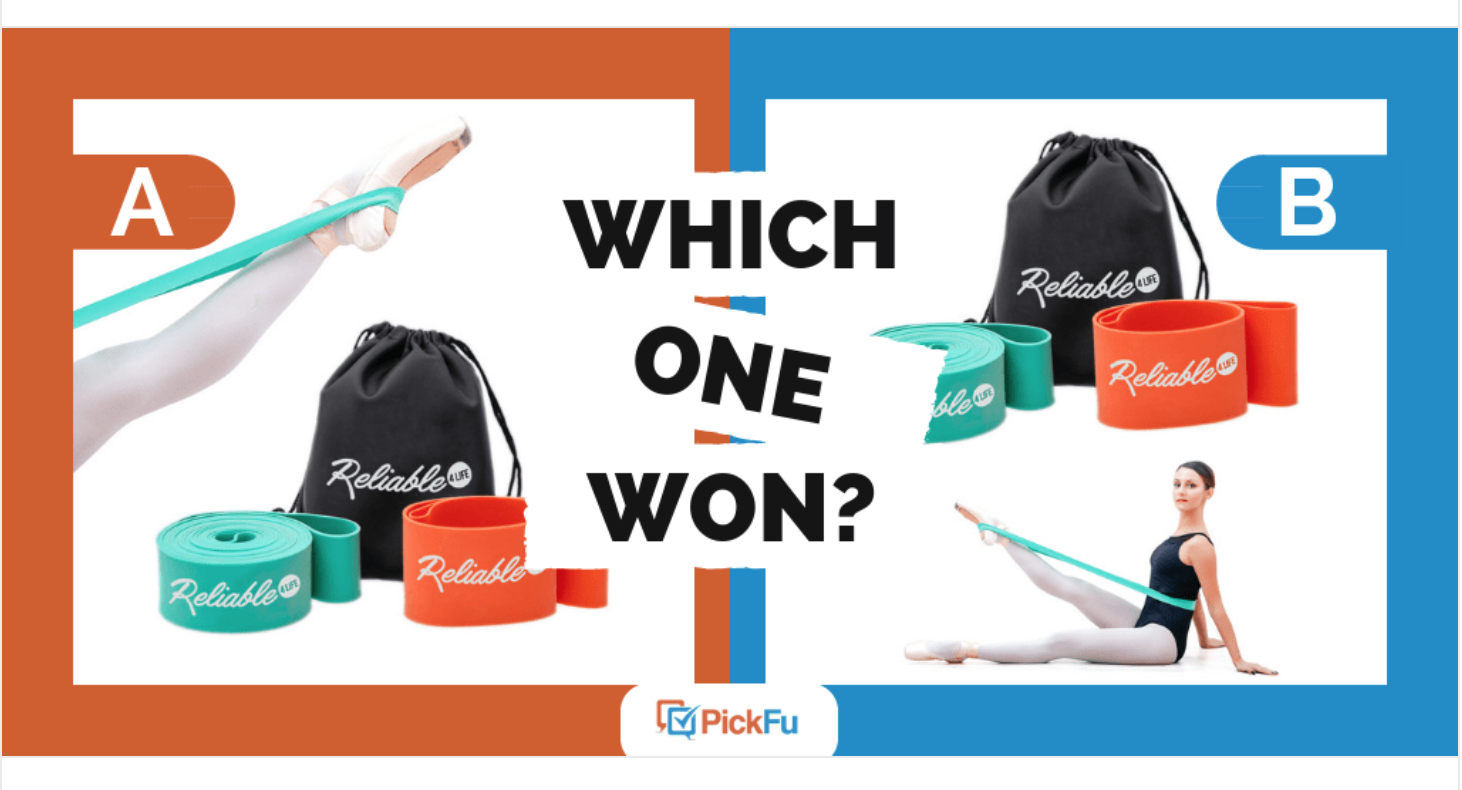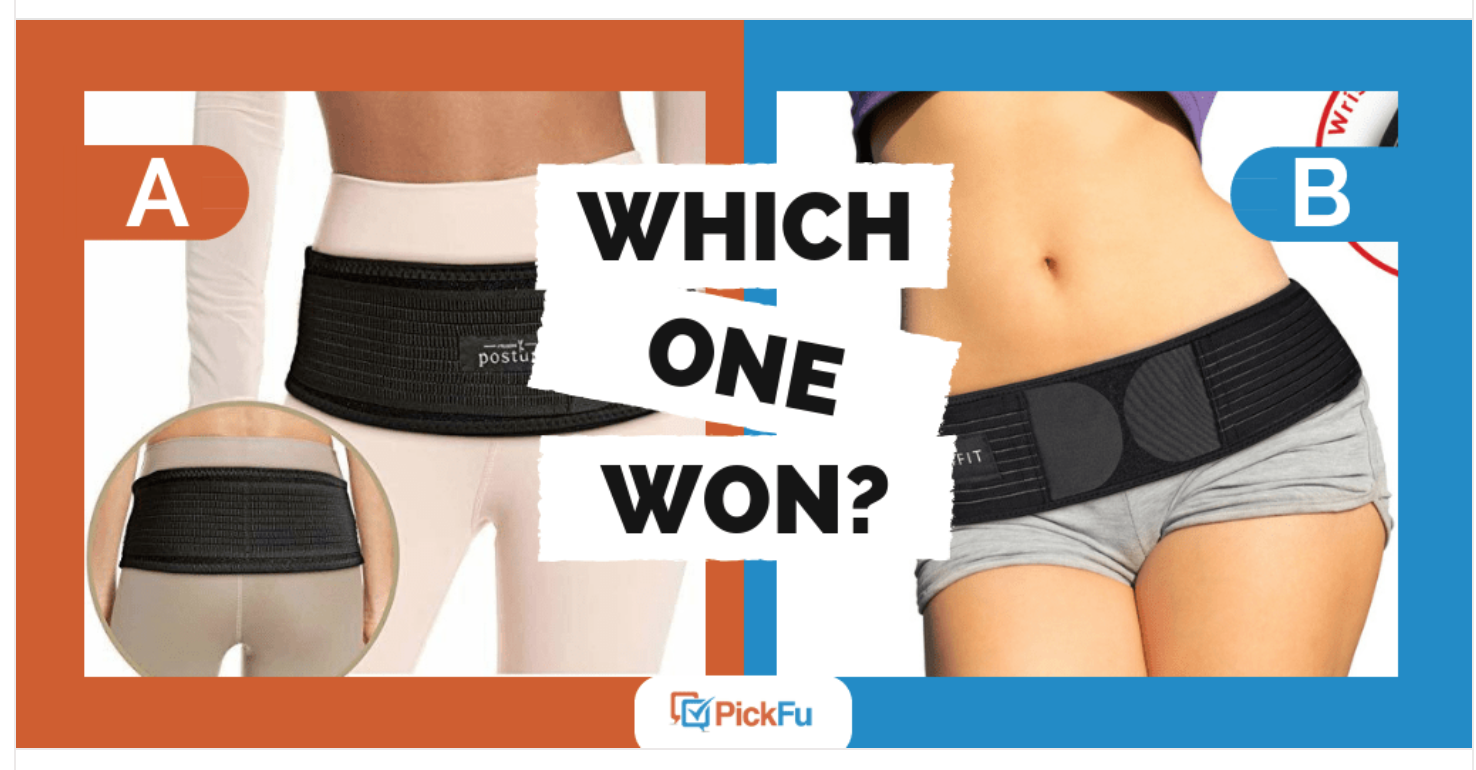Meet the interviewer
The E-commerce Evolution Podcast interviews top experts in the world of e-commerce. The show is hosted by Brett Curry of OMG Commerce, a company that specializes in search marketing for e-commerce. Because PickFu helps so many people make decisions for their e-commerce ventures, Curry hosted PickFu co-founder John Li.
Read on for interview highlights, or listen to the entire interview here.
How PickFu got its name
Brett Curry opened the episode by welcoming John Li to the show.
First, John gave the audience insight into PickFu’s beginnings. He and his business partner Justin Chen began their entrepreneurial endeavors in 2006. They were working on a Yelp competitor, which was not the most fun space to be in. There was lots of market pressure both on the traffic side and the monetization side. But as a side project, they built a tool where they could gather feedback quickly from 50-100 people.
The software helped solve the design debates they were always having. What really helped is that these were unbiased opinions.
In the beginning, PickFu was a minimum viable product. The site was ugly and barely worked but John and his partner knew how to use it. They called it PickFu because the domain name was available and it was short. And it’s like Kung Fu, but it’s Pick — helping you choose things.
PickFu couldn’t help getting discovered
People started finding and using PickFu organically. John and his co-founder slapped a PayPal button on it and people still used and shared it. Then they doubled the price — people still came. When they got tired of other businesses, they decided to go back to PickFu. They figured there was something in it that people found
At this point in the interview, Brett jumped in to talk about some of the uses for PickFu. For example, some of the users sell products on Amazon, so they’re trying to decide what image to use on
John added that at its core, PickFu is a polling platform that helps businesses make better decisions. Sellers poll PickFu’s Panel and they split-test images, product listings, price variations, and more. The uses are limitless.
Is it worth testing images?
Brett asked John what things he has learned along the way. What do people prefer? What does the marketplace like? Specifically, Brett wanted to talk about split-testing images.
Is it worth testing images, he said, and asking random people which they prefer?
It definitely matters, said John. PickFu has had a couple customers tell them they’ve doubled or tripled sales after creating polls and applying the information from the results to their product. Other customers improved their Amazon sales ranking after using PickFu.
Brett then wanted to know, what are some tips on creating images? What images versus others usually win?
Crafting the perfect product image
From what John has seen over the years, the most important thing to keep in mind when split-testing images
Say you’re selling an emergency kit with eight things inside. Your images should show the bundle all separated out versus everything together. Customers like seeing everything they’re going to get. And don’t just open the case; open the case, pull all the pieces out, and photograph that.
In many PickFu polls like this, the image with all the pieces pulled out will be the clear winner.
Also, the larger the images (and the less white space), the better. And if you’re selling an item that might be confusing, show a visual of use that the audience can relate to.
For example, in a recent poll, a seller was selling exercise bands for ballet training. One photo showed the ballerina’s leg stretching the band. The other showed an entire person stretching her leg with the band.
The image with the ballerina stretching with the band won. The photo that just showed a leg — even though it was technically a usage photo — was too awkward.
Brett found this interesting, adding that you want to show the product in action, but not share an image that’s more confusing than not.
The “why” matters
To make it clear why one image won, John said, PickFu requires respondents to say why they prefer one over the others.
One prime example of this is a lower-back brace poll a seller recently ran on PickFu. One image showed a sexy woman wearing the brace. The other showed less skin. The sexier version won for a general population audience.
But if you deep-dive into the comments, you’ll find that women preferred the non-sexy version. In fact, the sexy version was a real turn-off for some of them. So if the seller wanted to target women, the product might flunk.
Brett thought this might be because people tend to want models who look like them — not a younger, thinner version, but them now. They want to see how the product would look on or with them.
He added that conversion rates improve when consumers can relate to a model. Asking the right people why they like or dislike a product matters. As for the back brace poll, he said, there are enough women in the target market for that back brace that using the sexier image could really hurt the brand.
Additional takeaways on images
Next, Brett asked John if he had any other takeaways on image split-testing that the audience should know about.
John answered that there’s one thing people don’t utilize nearly as often as they should, and that’s putting text in the image. Think of your main image, he said, as a mini ad all by itself. Include key bullet points so the buyer can grasp everything just by looking at image. These types of images win polls all the time.
Here, Brett wanted to know if it was important to show the product label in an image.
John gave the example of a seller who was testing headphones. One image was really zoomed in of just earbuds. The other was earbuds with a coiled cable and a carrying case in packaging. John thought the zoomed-in photo would win, but the carrying case image won by landslide.
This pattern has been replicated many times across polls.
The product label matters, John said, because users get a better idea of what they’re going to get.
How much can you test on PickFu?
On PickFu, John said, you can test one idea (an open-ended PickFu Solo poll) or up to eight ideas or images. Testing an open-ended idea can help you get feedback you wouldn’t otherwise have thought to get.
Brett added that this is important because as a seller, you might be ignoring elements of your product listing. Think, “How many elements of my product listing on Amazon have I ignored?” You could be losing sales because there’s something on that description that you’re missing.
So now, Brett said, let’s move on to product descriptions. What are some takeaways on those?
Crafting strong product descriptions
As a general rule, John said, shorter is sweeter. No one likes heavy blocks of texts. Instead, use bullet points to share the value of a product. Tastefully use all-caps to make your bullet points even more effective. One- or two-word bullet points in all-caps are perfect for quick scanning.
What else can you test on PickFu?
Here, Brett asked what other things you can test on PickFu. Pricing? Product selection? What else in addition to images and product descriptions?
PickFu is very flexible, John said. Ask whatever your mind can come up with. One interesting way to use PickFu is as a pricing survey. Some sellers use PickFu to show a product and main features and ask, “How much would you pay for this product?”
They use audience targeting for this, choosing demographics that fit their ideal customer. From these potential customers, sellers get feedback on how much a buyer would pay, as well as what elements of the product listing were most valuable.
Brett chimed in to say that that’s almost more important — not only what we would pay, but why.
John said that another really interesting use is competitive comparisons. That’s where sellers pit the Amazon search listings of their product against the category leader. They then ask the audience, “Which would you buy and why?”
Maybe the seller’s listing doesn’t win, but now they know why the audience prefers the competitors.
It’s guaranteed, Brett said, that people will point out things you didn’t think of.
John added that sellers like Steve Chou of My Wife Quit Her Job have used PickFu to test the friendliness and trustworthiness of their own e-commerce stores. In Chou’s case, he simply posted a link to his store and used his poll as a gauge of testing store trustworthiness. He asked respondents to go to the store. “Would you buy from it?” he asked. “Why or why not?”
If you do something like that, you’ll get awesome, open-ended feedback. You’ll have a lot of next steps you can take to improve your e-commerce site.
How does PickFu find its feedback-givers?
Brett’s next question centered on the poll respondents.
John replied that there are several online panel companies out there. PickFu works with a couple of them and has refined their pool over the years. When PickFu’s respondents answer polls, John said, we learn more about them demographically. We ask, “Are you an Amazon Prime member?” Later on, when someone targets Amazon Prime members, we can let them know there’s a poll available for them to give their feedback.
What’s the best way to frame a question?
Brett asked John how PickFu customers could best frame questions. What types of questions get the best results?
How to format question makes a big difference, John said. In fact, it’s the number one predictor of poll success. Most of the time, questions are too complicated.
- Test one thing/ask about one thing at a time.
- Keep it simple. Asking, “Which image do you prefer?” will give you more open-ended, valuable feedback than a super-specific leading question.
- Make sure your options are different in ways that matter — not a hand-drawn sketch vs a computer-designed image, for example, but two different computer-designed images.
Brett wrapped up the interview by admiring the role PickFu plays in the e-commerce world. John directed audience members to PickFu.com to take a look at past polls, read blog posts, and start a poll themselves.





